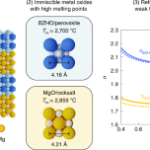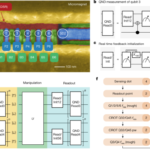2022-09-08 アメリカ合衆国・コーネル大学

・ コーネル大学が、改造した家庭用電子レンジによる次世代半導体の作製を実証。半導体産業の直面する主要な課題に対処する技術を開発した。
・ トランジスタ等のマイクロチップ部品を構成する材料の作製には、電流を得るために原料の混合と加熱(アニーリング)が必要。例えば、シリコンにリンをドープして加熱し、リン原子を適切な場所に配置して電気伝導を活性化させる。
・ マイクロチップの微細化に伴い、溶解平衡を超える量のリンをシリコンにドープする必要があるが、従来技術の高ドープ材料の加熱による機能的な半導体の製造は限界に近づいている。
・ 台湾積体電路製造(TSMC: Taiwan Semiconductor Manufacturing Company)では、余剰なドーパントの活性化にはマイクロ波の利用が可能である理論化している。しかし、家庭用電子レンジでの食品の暖めが時折不均一になるように、従来のマイクロ波アニーラーでは「定常波」が放出され、ドーパントの均一な活性化を妨げている。
・ 本研究では、TSMC との協力により、定常波の起こる場所を選択的に制御できるよう電子レンジを改造。余剰な加熱やシリコン結晶の損傷無く、ドーパントの適切な活性化が可能となる。
・ 2025 年頃に市場に出る半導体材料や電子機器製造での新技術の利用を想定。マイクロ波アニーラーのプロトタイプについて特許 2 件を出願済み。少数のメーカーが現在 3nm の半導体材料を製造しているが、新マイクロ波アニーラーは、TSMC や Samsung 等のトップメーカーによる 2nm へのスケールダウンの可能性を提供する。
・ 新技術はまた、マイクロチップへの高密度搭載のために過去 20 年間続いている直立型トランジスタの構造を変える可能性もある。トランジスタをナノシートとして平行に積層し、密度と制御性を向上させる新トランジスタ設計が試みられている。
・ 本研究は、国家科学及技術委員会(MOST)(台湾)が支援した。継続中の研究は、コーネル大学のCenter for Technology Licensing による Cornel Research Lab to Market グラントの Ignite が支援している。
URL: https://news.cornell.edu/stories/2022/09/modified-microwave-oven-cooks-next-gen-semiconductors
<NEDO海外技術情報より>
関連情報
Applied Physics Letters 掲載論文(アブストラクトのみ:全文は有料)
Efficient and stable activation by microwave annealing of nanosheet silicon doped with phosphorus
above its solubility limit
URL: https://aip.scitation.org/doi/10.1063/5.0099083
ABSTRACT
The relentless scaling of semiconductor devices pushes the doping level far above the equilibrium solubility, yet the doped material must be sufficiently stable for subsequent device fabrication and operation. For example, in epitaxial silicon doped above the solubility of phosphorus, most phosphorus dopants are compensated by vacancies, and some of the phosphorus-vacancy clusters can become mobile around 700 °C to further cluster with isolated phosphorus ions. For efficient and stable doping, we use microwave annealing to selectively activate metastable phosphorus-vacancy clusters by interacting with their dipole moments, while keeping lattice heating below 700 °C. In a 30-nm-thick Si nanosheet doped with 3 × 1021 cm−3 phosphorus, a microwave power of 12 kW at 2.45 GHz for 6 min resulted in a free-electron concentration of 4 × 1020 cm−3 and a junction more abrupt than 4 decades/nm. The doping profile is stable with less than 4% variation upon thermal annealing around 700 °C for 5 min. Thus, microwave annealing can result in not only efficient activation and abrupt profile in epitaxial silicon but also thermal stability. In comparison, conventional rapid thermal annealing can generate a junction as abrupt as microwave annealing but 25% higher sheet resistance and six times higher instability at 700 °C.
The authors thank H.-J. Gossmann of Applied Materials and Paul J. Timans of Mattson Technology for insight into the thermal stability of donors discussed in this work. The authors acknowledge financial support from Ministry of Science and Technology of Taiwan under Contract No. MOST 109-2628-M-008-004-MY3.




